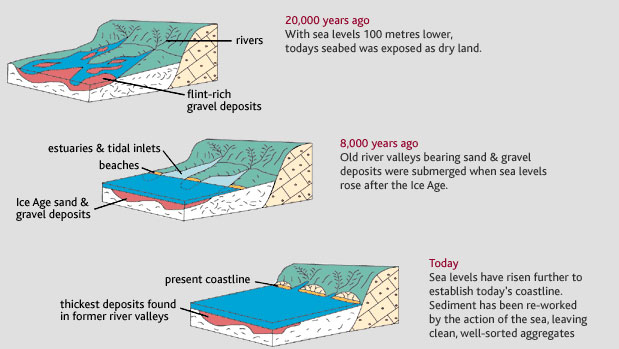Origins and geology
Fluctuating sea levels over the past two million years have led to the deposition of the sands and gravels that now lie on the seabed.
Although now submerged, these materials were originally deposited by rivers which flowed out seawards when today’s seabed was dry land. The sands and gravels were deposited during glacial times when fast-flowing rivers poured out across the dry shelf and are exactly the same as we now find on land. The deposits were re-worked during rising and high sea levels in the warm interglacial stages that followed.
The glacial/interglacial, warm-cold cycle was repeated many times, resulting in the concentration of gravelly deposits along and around river courses, which often form extensions of existing rivers visible on the land today. Consequently, the gravel reserves are essentially immobile and locked in ancient river terraces and channels, as well as in former coastal features such as ancient submerged beaches.
In contrast, the sands have been mobile during periods of higher sea level and have often been formed into banks and sand wave fields like those off Great Yarmouth and in the Bristol
How marine aggregates were formed

|


